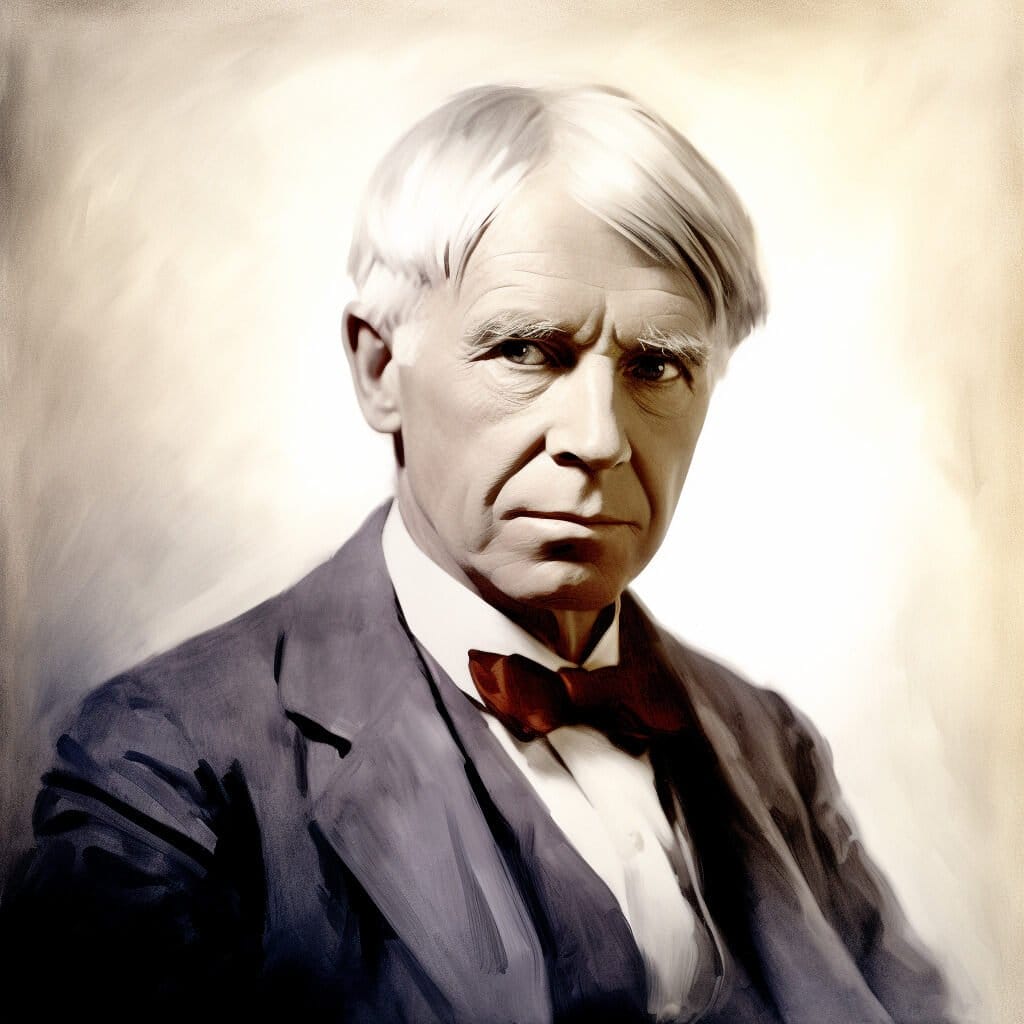Carl August Sandburg was a multifaceted writer, following careers as a poet, historian, biographer, and social commentator. He was born into a modest Swedish immigrant family. His early life exposed him to the struggles of the working class. This deeply influenced his poetic focus, and throughout his life, he championed social justice, and his works were highly relatable.
Sandburg’s journey to becoming a poet was unconventional. He held various jobs, including farm laborer, soldier, and journalist, which gave him unique insights into the American experience. One of Sandburg’s most well-known qualities was his ability to craft accessible verses that resonated with everyday speech.
His poetry covered a wide range of themes, from the beauty of the American landscape to the struggles of working-class families. In addition to his poetic endeavors, Sandburg was a celebrated biographer. His six-volume biography of Abraham Lincoln earned him a Pulitzer Prize in history, solidifying his position as a respected historian and storyteller.
Early Life
Carl Sandburg was an American poet born in his hometown, Galesburg, Illinois, in January of 1878. His parents, emigrants from Sweden, were quite poor and only took on the name of “Sandburg,” having altered it from “Sandberg” after arriving in America. Sandburg was born in a three-bedroom house (which is now a historic site) and was known as “Charles” or “Charlie” as a young boy. Sandburg’s father worked as a blacksmith’s helper in Chicago and Burlington but hardly brought in enough income to support his wife and seven children.
Sandburg was forced, due to his parent’s financial situation, to leave school at thirteen. He worked a variety of odd jobs as a bricklayer, driver of a milk wagon, and dishwasher – this turbulent period lasted throughout the remainder of his youth.
At the age of seventeen, in 1897, Sandburg left home to travel the roads to Kansas. He was homeless for the majority of this period, but his travels ended up being extremely influential on his future work. These days of wandering ended when he joined the military in 1898. He was stationed in Puerto Rico with the 6th Illinois Infantry. Although the Spanish-American War was ongoing, he was never called to fight.
Education
This slightly more structured period of his life ended in 1898 when he entered West Point. He attended for no more than two weeks before flunking out due to poor grades. After leaving West Point, he attended Lombard College in Galesburg for four years, supporting himself as an on-call fireman. While at Lombard, Sandburg fell under the influence of Professor Philip Green Wright, who would be paid for the publication of Sandburg’s first volume of poetry. This book was titled Reckless Ecstasy and was released in 1904. Wright would continue to help Sandburg in publishing two additional volumes, Incidentals and The Plaint of a Rose.
All in all, his time at Lombard was only marginally more successful than the weeks at West Point, as he left in 1903 without a degree. Lombard University was one of three schools that would later award him an honorary diploma.
Early Career
Sandburg’s life took another turn after they moved to Milwaukee, Wisconsin, and joined the Social-Democrat Party of America. After first arriving in the city he worked as a newspaper reporter, and later as secretary to the socialist mayor of Wisconsin, It was during this period that he met his future wife, Lilian Steichen. He would know her as Paula and was the sister of photographer Edward Steichen.
The two were married in 1908, and once more, Sandburg’s life restarted his life in another city. The couple moved to Chicago in 1912, and Sandburg fell in with the Chicago Daily News. The publication supported Sandburg’s work and published a number of his poems. His new family commitments sent him in search of a real job, and he worked as a journalist for five years. He covered socialism and business as well as writing reviews of movies and doing some investigative reporting.
Established Career
The creator of Poetry: A Magazine of Verse, Harriet Monroe, eventually discovered Carl Sandburg’s poetry, and he joined the ranks of the literary renaissance that was taking place in the city. His name was mentioned among other writers, such as Sherwood Anderson and Theodore Dreiser. His reputation was firmly established in 1916 with the publication of his volume, Chicago Poems. This collection was soon followed by Cornhuskers in 1918. Cornhuskers became one of his best-known collections when it won the Pulitzer Prize in 1919. He published Smoke and Steel in 1920.
In the following decade, Sandburg wrote three children’s books as well as a biography of Abraham Lincoln, which was published in two volumes in 1926. This decade brought about the publication of the anthology The American Songbag, and the collection of poems Good Morning, America, in 1927 and 1928. Sandburg’s books for children were creatively composed through recollections from tours Sandburg took across the country while playing music and reciting poetry.
Later Years and Death
In 1930, the family moved to Michigan, and ten years later, Sandburg won the Pulitzer Prize for History for the four-volume The War Years. This collection of historical biographies was the sequel to his 1926 biography of Abraham Lincoln. These prize-winning volumes were followed by Sandburg’s third Pulitzer Prize for his collection Complete Poems.
In 1945, Sandburg and his extended family, including his wife, daughters, and grandchildren, moved to Connemara in Flat Rock, North Carolina. This was an extremely productive time in his life as he published the novel Remembrance Rock in 1948. In 1959, he was invited, along with actor Fredric March, to address a joint session of Congress in commemoration of the 150th anniversary of Abraham Lincoln’s death. He published his final volumes, Harvest Poems, 1910-1960, and Honey and Salt, in 1960 and 1963.
Carl Sandburg died on July 22, 1967, of natural causes, and his ashes were interred behind his childhood home. Today, he is considered one of the greatest poets of his age.
Famous Poems
Carl Sandburg was responsible for an array of iconic works. Here are some of his most famous poems:
- ‘Chicago‘
- ‘Grass‘
- ‘Fog‘
- ‘from The People, Yes‘
- ‘Cahoots‘
- ‘Losers‘
- ‘To Beachey, 1912‘
- ‘A Dream Girl‘
- ‘Flash Crimson‘
- ‘Horses and Men in the Rain‘
- ‘Jazz Fantasia‘
- ‘Killers‘
- ‘Old Timers‘
- ‘Passers-by‘
- ‘Prayers of Steel‘
- ‘Skyscraper‘
- ‘Theme in Yellow‘
- ‘Under the Harvest Moon‘
- ‘Wilderness‘
FAQs
Carl Sandburg was famous for writing poetry, biographies, and folk songs. He is best known for his poetry, which is known for its free verse style, its use of American vernacular, and its celebration of American life.
Carl Sandburg’s poetry style is often described as “free verse,” which means that it does not follow traditional poetic forms such as rhyme or meter. Instead, Sandburg’s poems are more like prose poems, with a loose, conversational rhythm. He also often uses American vernacular in his poems, which gives them a sense of authenticity and immediacy.
Carl Sandburg was born in Galesburg, Illinois, on January 6, 1878.
Carl Sandburg died on July 22, 1967, in Flat Rock, North Carolina.
The poem ‘Grass‘ by Carl Sandburg is a meditation on the cycle of life and death. The poem uses the image of grass to represent the continuity of life, even in the face of death. The poem also celebrates the beauty and mystery of nature.


